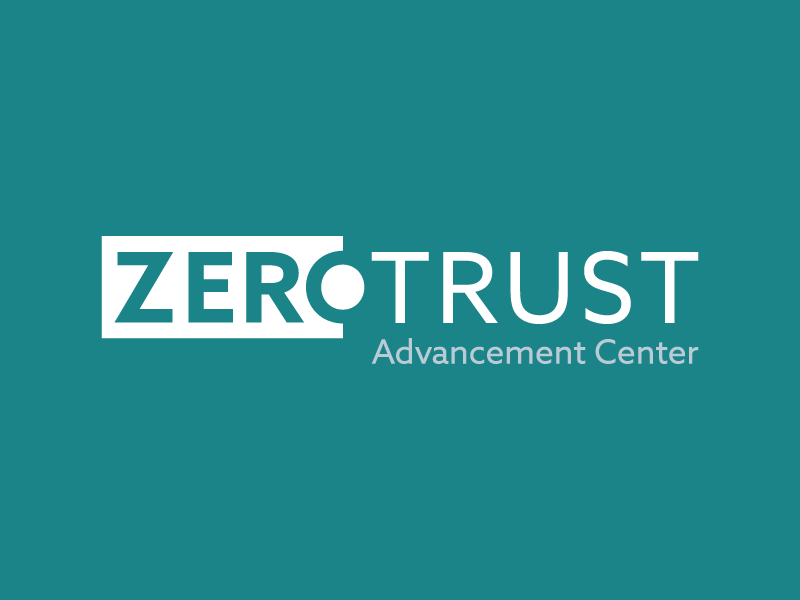Demystifying Secure Architecture Review of Generative AI-Based Products and Services
Blog Article Published: 10/16/2023
Written by Satish Govindappa.
Abstract
In the era of transformative technologies, Generative AI (GenAI) has emerged as a powerful force, redefining how we interact with data and information. It has unlocked the potential for innovation across various domains, from content generation to problem-solving. However, harnessing the capabilities of GenAI comes with the responsibility of ensuring the security and integrity of the applications built upon it.
This blog delves into the crucial process of conducting a secure architecture review for GenAI-based applications. It explores the evolving landscape of GenAI technology, the standards that govern it, and the threats that challenge its secure implementation. Moreover, it outlines a systematic approach to performing architecture reviews, providing insights into engagement initiation, information gathering, risk analysis, and more.
Scope
The scope of this blog is to provide a comprehensive guide to conducting secure architecture reviews for applications powered by GenAI. In an era where AI-driven innovations are reshaping industries and enhancing human capabilities, it is paramount to ensure that the development and deployment of GenAI-based applications adhere to the highest standards of security and integrity.
Overview
Our journey begins with a foundational understanding of the GenAI landscape, distinguishing it from conventional AI-based applications. We delve into the unique challenges and risks associated with GenAI, presenting real-world examples and highlighting the critical need for rigorous security measures.
The subsequent sections of this blog are structured as follows:
Introduction
In today's fast-paced business landscape, the demand for AI-based applications, particularly GenAI, has surged. These applications hold immense potential, capable of accelerating processes by up to tenfold. However, they bring with them a substantial risk—the potential leakage of sensitive company information. This risk arises from their unique capability of self-learning, which can accidently expose critical data.
Problem Statement
The core issue we're confronting revolves around this dilemma. On one hand, there's a compelling need for AI applications to drive efficiency and innovation. On the other hand, ensuring the security of sensitive data is paramount. We find ourselves in need of a robust evaluation methodology, standards, and processes to safely integrate Gen AI applications into our organizations.
Today, we embark on a journey to explore precisely how we can strike the right balance between harnessing the power of AI and safeguarding our vital information.
Understanding GenAI
Key Differences between GenAI and AI-Based Applications: GenAI distinguishes itself from traditional AI-based applications in several fundamental ways:
Purpose: Traditional AI applications simulate human intelligence to perform specific tasks, such as recommendation systems or automation. In contrast, GenAI goes beyond tasks; it generates data it was trained on.
Output: Traditional AI provides logical responses based on patterns and data. GenAI, on the other hand, generates novel content, be it text, images, or other forms of data.
Data Usage: Traditional AI leverages data to make informed decisions or recommendations. GenAI, however, can inadvertently expose sensitive data, making data privacy a critical concern.
Application Areas: Traditional AI is commonly found in recommendation systems, process automation, and data analysis. GenAI excels in creative tasks like text and image generation, content creation, and even mimicking human-like conversations.
Categories of GenAI Models
GenAI models encompass a variety of applications, each tailored to specific use cases. These models can typically be categorized into three main groups:
Consumer Model
These models are harnessed by third-party GenAI applications, such as browser or email plugins. They aim to elevate user experiences by enhancing various functionalities. For example, autocomplete features in emails or content suggestions in writing applications.
Internal Model
This category involves the utilization of private GenAI models within an organization for internal purposes. For instance, organizations employ private GPTs (Generative Pre-trained Transformers) to safeguard their data and ensure security while leveraging the power of GenAI.
Customer Model
Businesses leverage this category to offer tailored services to their customers. It involves the deployment of in-house Large Language Models (LLMs) to provide personalized interactions and solutions. Examples include chatbots that assist customers or AI-generated content on e-commerce websites.
Understanding these categories is crucial for assessing the security implications of GenAI applications, as each category presents unique challenges and risks.
Threats
In the realm of AI-based products and services, understanding the potential threats is paramount to effective security. Here, we explore some of the key threats organizations may face:
Input Manipulation
Imagine interacting with a chatbot or AI-driven system. Changing your words or asking tricky questions can lead to incorrect or harmful responses. For instance, a medical chatbot might misinterpret a health query, potentially providing inaccurate medical advice.
Adversarial Attacks
Adversarial attacks target AI models, particularly in areas like image recognition and facial identification. Small changes to input data, such as adding glasses or makeup, can deceive AI systems into not recognizing individuals. This can have serious implications for security, privacy, and access control.
Data Poisoning Attack
This type of attack involves maliciously manipulating the data used to train AI models. By introducing false or misleading data into the training dataset, attackers can compromise the accuracy and reliability of AI systems. This can lead to biased predictions or compromised decision-making.
Model Inversion Attack
Attackers may attempt to reverse-engineer AI models to obtain sensitive information. By analyzing the model's output, they may gain insights into confidential data, potentially leading to privacy breaches or intellectual property theft.
Transfer Learning Attack
In this scenario, an attacker manipulates an AI model by transferring knowledge gained from one domain to another. This can result in the AI system producing incorrect or harmful outcomes when applied to new tasks.
Understanding these threats is critical, as they have far-reaching implications for the security, privacy, and integrity of AI-based products and services. To mitigate these risks effectively, organizations must employ robust security measures and stay vigilant in the face of evolving threats.
Challenges
The landscape of GenAI presents organizations with unique challenges that demand careful consideration:
Information Leakage
GenAI models, when not appropriately controlled, have the potential to generate outputs that inadvertently leak sensitive information. For instance, a GenAI model trained on financial data could inadvertently produce reports containing confidential financial details, risking data exposure.
Privacy Concerns
Consider an AI-driven healthcare application that generates patient diagnoses based on medical records. Privacy concerns arise regarding unauthorized access to personal health information, necessitating strict controls to safeguard sensitive data.
Legal Concerns
The use of AI in generating legal documents or providing legal advice introduces complexities in determining liability in cases of errors or misleading content. Legal ambiguities may arise, and organizations must navigate this landscape carefully.
Solution
Now that we have a comprehensive understanding of the challenges and threats associated with AI-based products and services, let's explore effective solutions and strategies to address these concerns.
Security Architecture Review Methodology
The GenAI architecture review methodology comprises five key steps:
Intake Process: Begin by initiating the intake process, where you gather essential information about the AI application under review.
Threat Modeling: Identify potential threats and vulnerabilities specific to the application. This step helps in understanding the security landscape.
Security Control Review: Evaluate existing security controls and measures within the AI application's architecture. Assess authentication, authorization, data privacy, and ethical use.
Risk Severity Assessment: Assess the severity of identified risks and vulnerabilities to prioritize mitigation efforts effectively.
Reporting: Summarize findings and recommendations in a comprehensive report to be shared with stakeholders.
Tabletop Exercise Questions
Conducting tabletop exercises involves questioning GenAI product vendors across various domains. This exercise focuses on essential aspects such as authentication, authorization, bias mitigation, data privacy, and ethical use. By rigorously examining these elements, organizations can ensure comprehensive security and ethical considerations before integrating GenAI products and services.
Understanding Internal Architecture / Technology Stack
The internal architecture of GenAI applications typically follows a common pattern across three model types: Consumer, Customer, and Employee. Each model comprises three key components:
Front End: This component facilitates user interactions through a web framework, ensuring accessibility and user-friendliness.
Back End: The engine powering GenAI applications includes Large Language Model (LLM) frameworks like Langchain and prominent LLMs such as OpenAI. Accessible via an API gateway, the back end is a critical part of the architecture.
Infrastructure: GenAI applications are hosted in secure environments, forming the infrastructure where security controls and measures must be implemented effectively.
Evaluation Framework
Based on the internal architecture discussed above, organizations can establish a comprehensive evaluation framework for security controls. This framework covers multiple facets:
Front End Controls: Evaluate authentication, access control, data validation, and response sanitization to ensure robust front-end security.
Back End Controls: Assess the LLM framework and models for safeguarding data privacy, protecting against adversarial attacks, and ensuring the integrity of single-tenant models.
Infrastructure Controls: Conduct rigorous validation, including Business Continuity Planning (BCP), Disaster Recovery (DR), and continuous monitoring, to ensure the security and resilience of GenAI applications.
Connecting the Dots
Putting the methodology and security evaluation framework into action involves an end-to-end architecture review process. This review comprises seven key steps:
Step 1: Engagement Initiation: Request the product team to submit a review ticket with basic details to initiate the process.
Step 2: Scoping and Information Gathering: Conduct a tabletop exercise, collaboratively brainstorming the application and asking questions derived from the questionnaire. Both the product team and the infosec team share responsibility in this step.
Step 3: Risk Assessment: Utilize the STRIDE methodology to conduct threat modeling, create a data flow diagram, identify potential threats, threat agents, and establish trust zones. The infosec team leads this step.
Step 4: Reporting: Summarize and prioritize findings, preparing a report to be shared with stakeholders.
Step 5: Signoff: Based on the findings, approve or deny the request. If there are no critical or high-severity issues, approve; otherwise, deny.
Step 6: Exception/Risk Acceptance: In cases where identified issues cannot be addressed, an exception/risk acceptance process is initiated, seeking approval from relevant stakeholders.
Step 7: Signoff with Exception/Risk Acceptance: Once all stakeholders grant approval, document accepted risks, and approve the request for implementation.
Use Case 1 : GenAI Email Plugin
Let's delve into two real-world use cases to illustrate the architecture review process in action:
In this scenario, the product team expressed interest in integrating a GenAI email plugin designed to assist in email drafting. The security architecture review process unfolded as follows:
Engagement Initiation: The infosec team initiated the engagement by requesting the product team to create a review ticket with high-level information.
Scoping and Information Gathering: A tabletop exercise revealed that the vendor's chosen LLM for the email plugin was multitenant. This discovery raised concerns about data security.
Risk Assessment: A comprehensive risk assessment, including a dataflow diagram, was carried out. It identified a critical finding related to the multitenant LLM model that had the potential to compromise data security. As a result, the request was denied.
Use Case 2: GenAI Private Chatbot
In this scenario, the product team expressed a desire to integrate a GenAI private chatbot into their system. The security architecture review process proceeded as follows:
Scoping and Information Gathering: During the tabletop exercise, it was revealed that the vendor's chosen LLM for the chatbot was single-tenant, a security advantage. Additionally, the application had robust input validation and output sanitization measures to ensure user prompts' security and integrity.
Risk Assessment: A thorough risk assessment was conducted, complete with a dataflow diagram that delineated assets, potential threat agents, and trust zones. The resulting report delivered a clean bill of health, with zero critical or high findings, leading to the approval of the product team's request.
These real-world use cases highlight the practical application of the security architecture review process, demonstrating how it can effectively evaluate and secure GenAI applications.
Recommendations
Seven Pillars for Success
As organizations embrace AI adoption, particularly GenAI, it's crucial to establish a robust foundation for security. Here are seven essential pillars for success in securing AI-based products and services:
Infrastructure Security: Just as we secure physical spaces, organizations must ensure the security of their digital infrastructure. This includes network security, data center security, and cloud security.
Identity and Access Management (IAM): IAM functions as the security team, ensuring that only authorized individuals can access digital assets. Implementing strong IAM policies and controls is paramount to data protection.
Data Security: Data is often the most valuable asset. Protect it from theft or damage through encryption, access controls, data masking, and regular audits.
Application Security: Safeguard AI applications to prevent unauthorized access and data breaches. Implement security measures such as code reviews, vulnerability assessments, and secure coding practices.
Logging and Monitoring: Establish a vigilant digital watchman by implementing comprehensive logging and monitoring solutions. Early detection of anomalies and threats is crucial to swift response.
Incident Response: Prepare for emergencies by developing an incident response plan. Define roles, responsibilities, and actions to take in case of a security incident.
Governance: Create a rulebook for AI usage within your organization. Ensure that AI is used safely, ethically, and in compliance with regulations and industry standards.
Safeguarding AI Adoption: In today's digital landscape, safeguarding AI adoption is not a choice but a necessity. As organizations navigate the ever-changing AI landscape, staying proactive, vigilant, and secure is paramount. The recommendations outlined in these seven pillars provide a strong shield to protect organizations in the world of AI technology.
Conclusion
In this comprehensive blog, we have explored the critical aspects of conducting a security architecture review for AI-based products and services, with a specific focus on Generative AI. From understanding the unique challenges and threats to proposing effective solutions and recommendations, we have provided a roadmap for organizations to navigate the complexities of AI adoption securely.
As AI continues to transform industries and drive innovation, organizations must remain steadfast in their commitment to security. The proactive measures outlined in this blog are essential for safeguarding sensitive data, ensuring ethical AI use, and protecting against evolving threats.
In conclusion, the path to AI success begins with a robust security foundation. By following the principles and strategies outlined in this white paper, organizations can harness the transformative power of AI while maintaining the highest standards of security and integrity.
References
NIST AI Risk Management Framework
Deloitte AI Governance Framework
AI4People Global Governance Framework
Gartner's AI Governance Framework
About the Author
Satish Govindappa is a highly accomplished professional with an extensive background in cloud security and product architecture. With over two decades of experience, Satish has established himself as a prominent figure in the industry, serving as a Board Member and Chapter Leader for the Cloud Security Alliance SFO Chapter.
He holds a master's degree in computer applications (MCA), specializing in cybersecurity and cyber law. Additionally, Satish has earned a Master of Business Administration (MBA) degree, further enhancing his expertise in the intersection of technology and business strategy.
His expertise lies in designing, architecting, and reviewing both cloud, non-cloud and ai/genai products and services. Satish has a proven track record of successfully implementing robust security measures and ensuring the integrity and confidentiality of sensitive data.
Related Resources



Related Articles:
Securing Generative AI with Non-Human Identity Management and Governance
Published: 05/16/2024
Navigating Cloud Security Best Practices: A Strategic Guide
Published: 05/15/2024
How to Design an IT Service Model for End User Happiness
Published: 05/15/2024
5 Best Practices to Secure Your Azure Resources
Published: 05/13/2024






